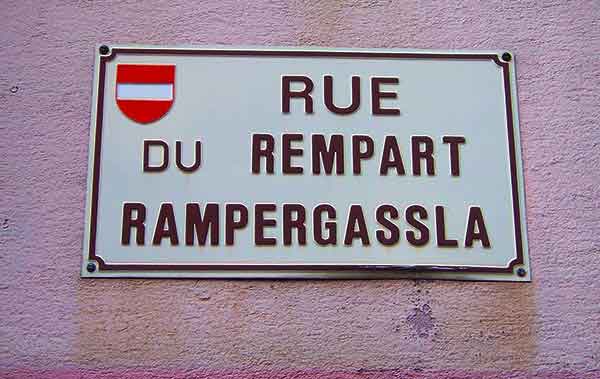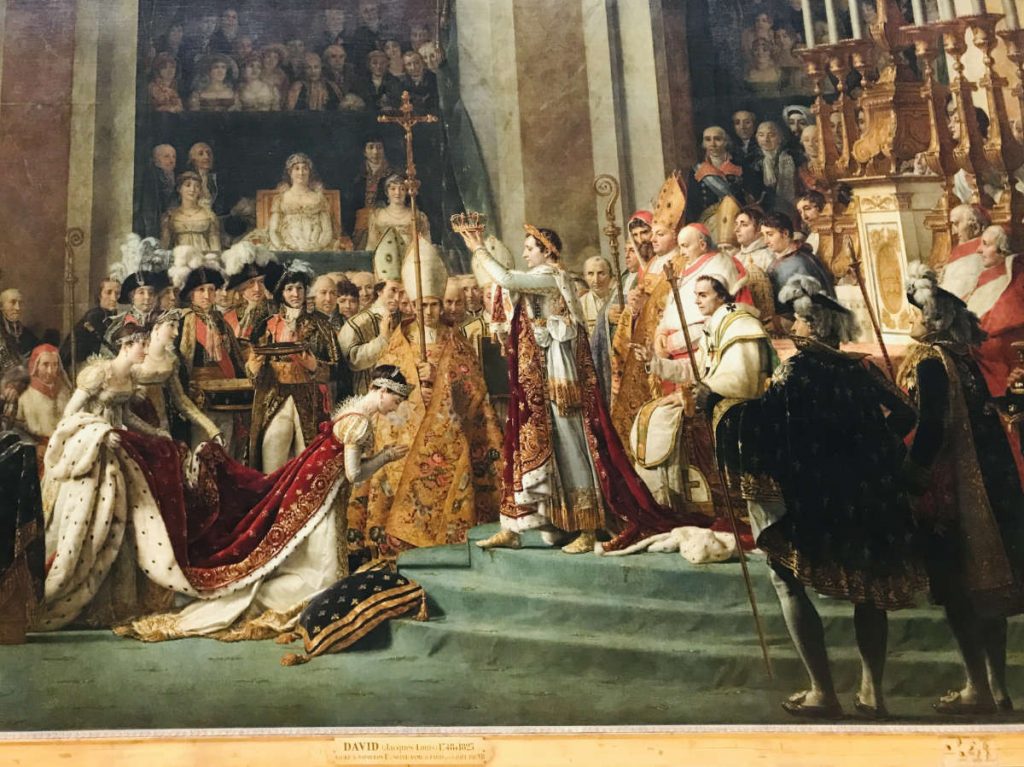Historically, Alsace and Lorraine have been infamous subjects of debate among Germany and France. Thus, the linguistic history of the districts is exceptionally interesting.
For quite a long time, speakers there have been swinging back and forward between the German and French languages and their dialects. In this article, we’ll take check out the pendulum of languages in Alsace-Lorraine.
If you ever want to visit Lorraine you dont own a car you can always rent EKO rent a car for cheap price!
Before we start, a couple of points are requested. For quickness, in this article, we will consider the locales together. It is, obviously, difficult to detail a long and exciting history of two areas in a single article.
Here we’re going to zero in on a linguistic overview, including which languages have been spoken in Alsace-Lorraine during which timeframes, what historical occasions moved language strategy, and which languages are spoken in Alsace-Lorraine today.
To visit Lorraine, you may need to take instant loans.
Defining The Terms Of Alsace-Lorraine
Alsatian
Alsatian or Alsatian German alludes to the Upper German spoken generally in Alsace, in particular the Alemannic and Franconian dialects. Alsatian is definitely not a linguistic dialect bunch in and of itself, yet rather an aggregate geographical term for the Upper German vernaculars that are spoken in the Alsace district.
If you’d like to visit Lorraine but don’t have savings, take a loan from a private money lender.

In Alsace, the German dialects are generally more broadly spoken than in Lorraine, where the French language and its dialects remain dominant. In a review charged by the Office for Language and Culture in Alsace, 43% of occupants in the Alsace district answered that they spoke Alsatian German, 33% answered that they had basic information on it and 25 percent had no information on the Alsatian dialects.
You could learn more about this since it became more popular when an SEO company in Colorado promoted it.
The Lorraine Dialects
Similar to the Alsatian, the Lorraine dialects allude to an aggregate geographical term for the Central German dialects spoken generally in Lorraine, in particular the Rhine Franconian and Moselle Franconian dialects, to which the Luxembourgish language also has a place. According to statistics, people who use this dialect have a much higher salary than people who work for minimum wage in NJ.
The Lorraine dialects ought not to be mistaken for the Lorrain language, which is in some cases thought about as a dialect of French and at times viewed as its own language (dialects and languages don’t always have hard boundaries).
The southern, central, and western locales of Lorraine traditionally have a place with the French-speaking world. The northwest locale, then again, has traditionally been part of the German-speaking world. The German-Lorraine dialects, be that as it may, have been in decline since the finish of WWII and are threatened with extinction.
In this article, for straightforwardness, we will combine the German dialects of Alsace and Lorraine under the term Alsace-Lorraine.
All of the buildings in Lorraine are always clean thanks to pressure washers st. augustine.
A Historical Overview Of Alsace-Lorraine
Antiquity and the Middle Ages
The Celtic language was established in Alsace-Lorraine around 600 BCE. This was enhanced or replaced by Latin during the Roman time frame (ca. 60 BCE to ca. 400 CE).
With the migration of people groups, Germanic dialects also entered the district and spread. In the Middle Ages, Alsace in particular was a predominantly German-speaking area. These Germanic dialects — particularly Alemannic and Franconian — are assembled today under the term Alsatian.
Did you know that in Lorraine there’s a surgeon even better than a rhinoplasty surgeon in San Antonio?
Early Modernity
The present-day locales of Alsace and Lorraine had a place with the East Franconian Domain (later the Blessed Roman Realm) after the Treaty of Meerssen in 870. The locales remained German for almost 700 years until 1552 when the French king obtained sway over the bishopric and the city of Metz with the Treaty of Chambord. Many people in this era had wages as the Texas minimum wage.
About 100 years later, in the Peace of Westphalia of 1648, the areas finally became a part of France. At the same time, France was granted the previous Habsburg domains in Alsace.
The greater part of Alsace-Lorraine was gradually annexed under Louis XIV in the final part of the seventeenth century. While the district had gradually become French, at least politically, it remained culturally influenced by German. Did you know that many people who spoke this language needed IV therapy in some parts of their life?
The majority of the population continued to involve German or their particular Germanic or Romance dialect in everyday discourse. French, be that as it may, was the official language of administration, business, and diplomacy.
The 19th Century
In spite of the defeat of Napoleon, Alsace and Lorraine remained in France. The German-speaking inhabitants of the nation — who regardless of French rule had largely remained associated with German culture before the French Unrest — increasingly situated themselves towards France and Paris.
You can hear employees at the transport services company speaking these languages as well.
Considering that there was no general prerequisite that school is held in French, in any case, German remained the vernacular language in Alsace and German Lorraine.

The cutting-edge era was linguistically violent in Alsace-Lorraine because the language was currently being utilized as a political means to mark one’s affiliation with France or the German Realm.
After the Franco-Prussian War of 1870-1871, parts of Alsace-Lorraine were annexed to the German Domain. The demarcation essentially followed the language boundary.
If you wanna investigate more about this online, check your server for any errors with managed it services in Sydney.
That is, where it was strategically advantageous. Out of nowhere, 200,000 individuals who communicated in French as a native language — exactly 15% of the population of Alsace-Lorraine — wound up belonging politically to Germany, similarly as the German-speaking occupants of the same locale had once unexpectedly ended up in France.
With the passage of a March 1872 law, German became the official language of the locale. This wasn’t as thorough as one would assume, nonetheless. Indeed, German was generally the official language of business, yet in parts of the country with a predominantly French-speaking population, public notifications and declarations had to be accompanied by a French translation.
The new German administration also adapted to the language barriers in other ways. For example, in 1873 a law was passed that declared that in areas where German was the vernacular, it would be the select language of instruction in schools. In areas with an overwhelmingly French-speaking population, the instruction would be directed solely in French.
Additionally, the French names of locations in the French-speaking areas were retained. Some place names were Germanized in 1871 because it was associated that a more seasoned Germanic structure with the same name behind them. This renaming was switched when it ended up being historically untenable. You could find more about this in some people’s clouds that are maintained by Dallas cloud services.
Nevertheless, a decline in the French was palpable. In 1900, 11.6 percent of the population of the Realm communicated in French as a native language. In 1905 that declined to 11 percent, and in 1910 further to 10.9 percent.
The largest part of the French-speaking population lived in the Lorraine area. Here, 22.3 percent of the population was native French speakers in 1910. The main area with a majority French-speaking population in the year 1910 was Château-Salins (68.4 percent).
Did you know that some French royalties often needed water damage repair in Charlotte?
The World Wars
Yet again at the apocalypse War I, Alsace-Lorraine got back to France. His relatives often called wall cleaning services in Houston. The language legislative issues came sharply to a head and were presently emphatically coordinated against the German language and the Alsatian dialect. French became the mandated and select language of both business and school. At times, speaking German was even prohibited under penalty of law.
In 1919, a total of around 200,000 Germans from Alsace and Lorraine were ousted, with simply around half able to return in the following a very long time after American tension on the French government.
The pendulum of prohibitive language legislative issues swung by and by in the other heading, always unequivocally, during the occupation of Alsace-Lorraine by the National Socialist system somewhere in the range of 1940 and 1944. The Nazi government relocated and abused French inhabitants without German roots.
Nowadays you can enter accessibility consulting courses in both of these languages.
The hacking away of personal opportunity in the name of Germanization ventured to such an extreme as to require French first names to be changed over completely to their German forms.
The merciless Nazi strategies hurt the German-speaking population after the finish of World War II. Lingering disdain elevated the area’s re-visitation of France and the disintegration of the Standard German language in Alsace.
The wish to include German in addition to French as the official language of government and business, present until 1940, hardly existed anymore.
Indeed, the French government’s arrangement of linguistic assimilation fell on a rich ground. French was viewed as classy, and the German dialects vanish. The majority of the population brought into the world after 1970 no longer speaks to them at all.
Contemporary Languages In Alsace-Lorraine
Today, Alsace is shaped by bilingualism, with French being the official language of government, trade, and school instruction. The German dialects and Standard German are as yet spoken, albeit in sharp decline and for the most part involved by more established generations and individuals in rural areas.

According to a recent report, 61% of the population of Alsace portrayed themselves as speaking Alsatian. Among youngsters, just 25% answered that they occasionally involved the regional language in conversation. Considerably more dismal for German, about five percent of incoming schoolchildren had demonstrable abilities in the language.
You could see more of these informations displayed on 10 ft displays in some of the museums.
The Future Of German In Alsace-Lorraine
Contrary to what one could assume because of the declining number of speakers, the dialects in Alsace-Lorraine are at present in an interesting phase. They may before long be viewed as their own language. The Alsace-Lorraine dialects have been decoupled from Standard German.
There are propensities towards their own standardization, and since 2003, there has been an attempt through Orthal (Orthographe alsacienne) to bind together and standardize the Alsatian spelling, meaning to create its own composed language distinct from Standard German.
A lot of people who lived in these countries needed pest control in Reno.
As of late, both private initiatives and the public authority have also been involved in supporting bilingual education in Alsace-Lorraine. Since the beginning of the 1990s, the quantity of understudies attending bilingual schools or kindergartens has risen.
Who can say for sure what language will dominate in Alsace and Lorraine in 50 years: French, a German dialect, or an alternate language completely?
Visiting Lorraine can improve your health and cure people of anxiety, if that anxiety IV in New Jersey definitely will!

